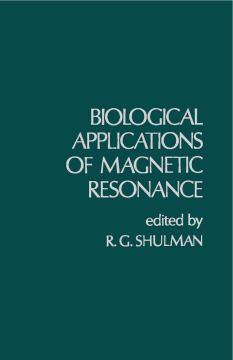
Additional Information
Book Details
Abstract
Biological Applications of Magnetic Resonance discusses various applications of magnetic resonance techniques. The book's opening chapter examines the exchange behavior of the hydrogen-bonded protons and its influence on their nuclear magnetic resonance (NMR) spectra. This is followed by separate chapters dealing with NMR studies of nucleic acid and drug-nucleic acid complexes. Aspects of the basic theory of the nuclear Overhauser effect (NOE) are presented, along with applications of NOEs observed for protons in biomolecules. Subsequent chapters cover specialized EPR techniques that have been applied to biological problems; the use of physical methods to refine a model of the combing site of the Fv fragment of protein 315; and the utility of model compounds in the analysis of hemoprotein NMR spectra. The remaining chapters discuss serine proteinases that have been investigated by nuclear magnetic resonance spectroscopy; the use of NMR in the study of intact living tissue and organs; and 31P and 13C NMR studies of E. coli cells.
